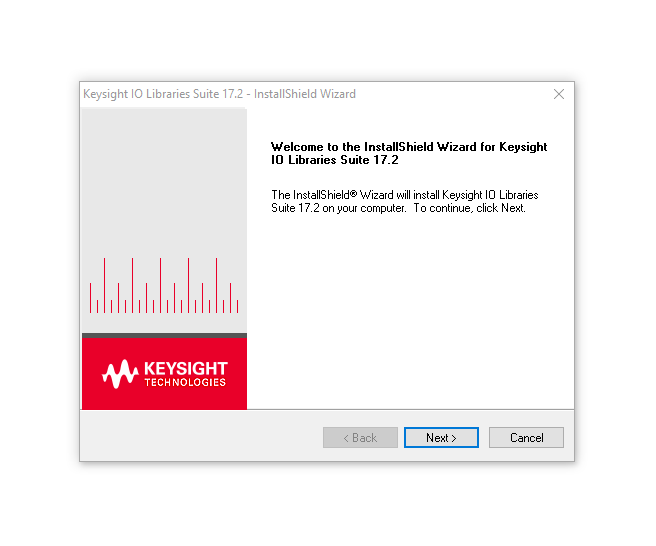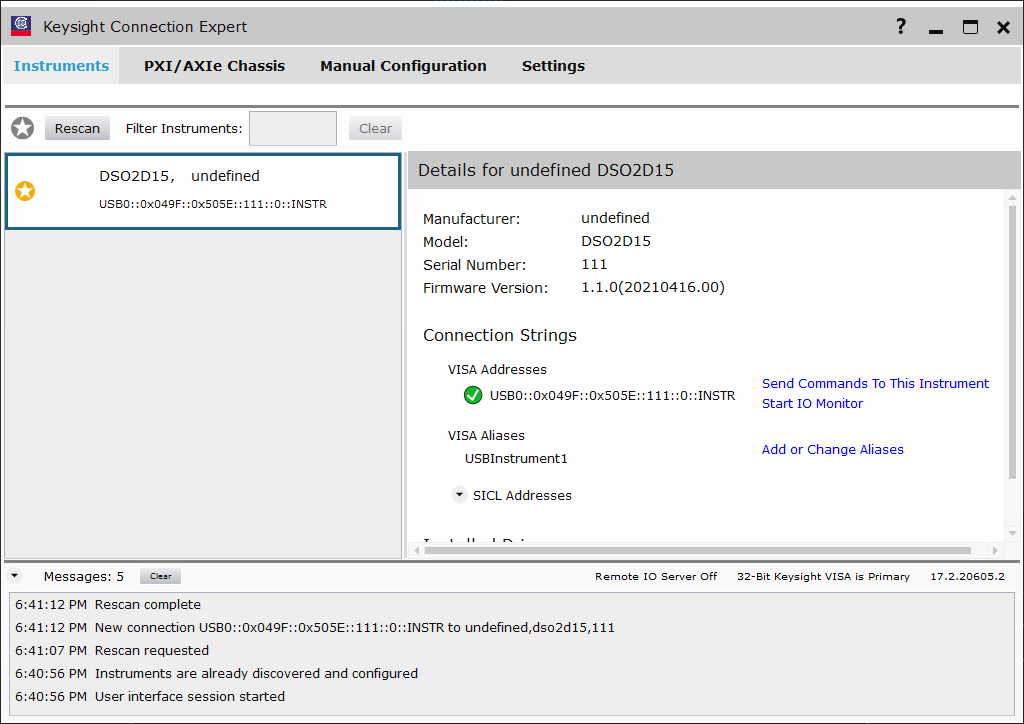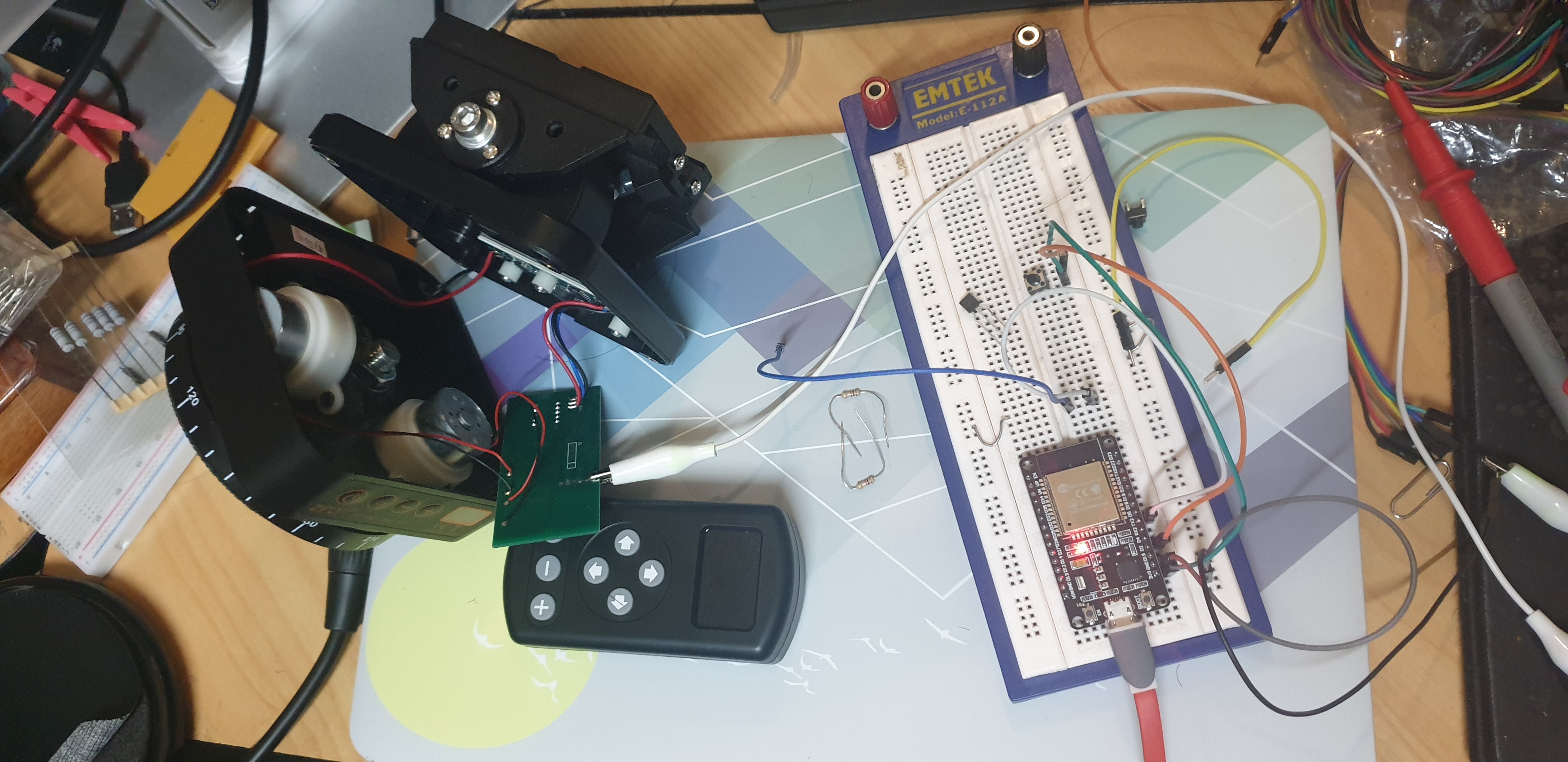I’ve been wanting to purchase an oscilloscope for quite some time.
A multimeter can only get you so far with reading single data points at a single time - but an oscilloscope provides you with multiple data points over a time series… that means we can read waveforms, and those cool things!
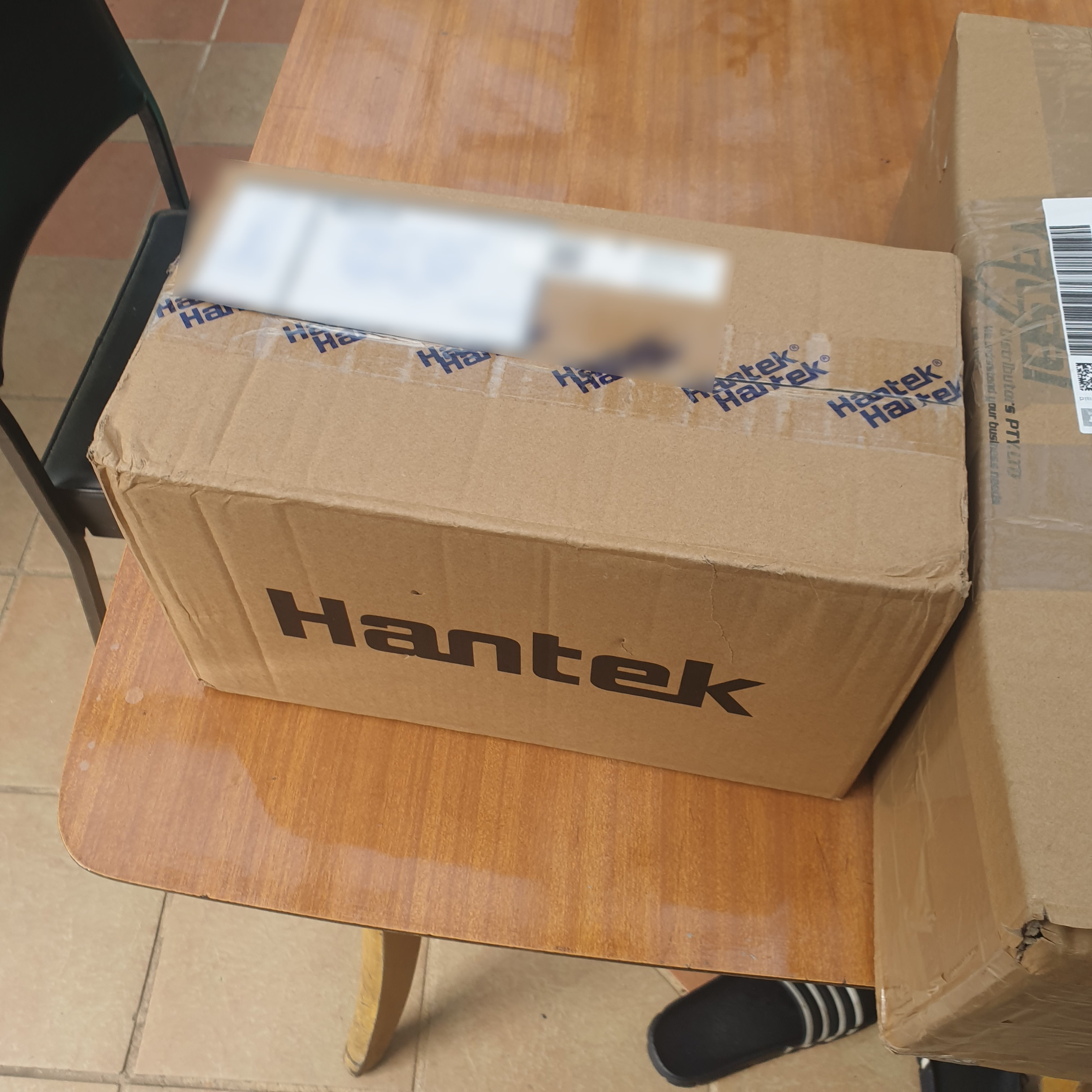
I opted for the Hantek DSO2D15, which is a dual-channel + function generator oscilloscope, with a bandwidth of 150 MHz, and sample rate of 1 GSa/s.
Now I’m no oscilloscope guru in any means, I’m quite a newbie; having only used the Keysight scopes in the UNSW Electrical Engineering labs - but some of my more knowledgeable friends helped to explain what things I should look out for when selecting an oscilloscope.
I’m unlikely to work with really high frequency signals, so I saved money by purchasing a scope with a relatively ‘par’ bandwidth capability. Also in terms of the sampling rate; 1 billion samples is probably enough for the tinkering that I was planning to use it for.
The DSO2D15 also has some cool protocol decoding functions - like SPI, I2C, etc.. - those might come into handy some day…
Oh and there’s also USB support… if I ever wanted to use that.
What’s In The Box
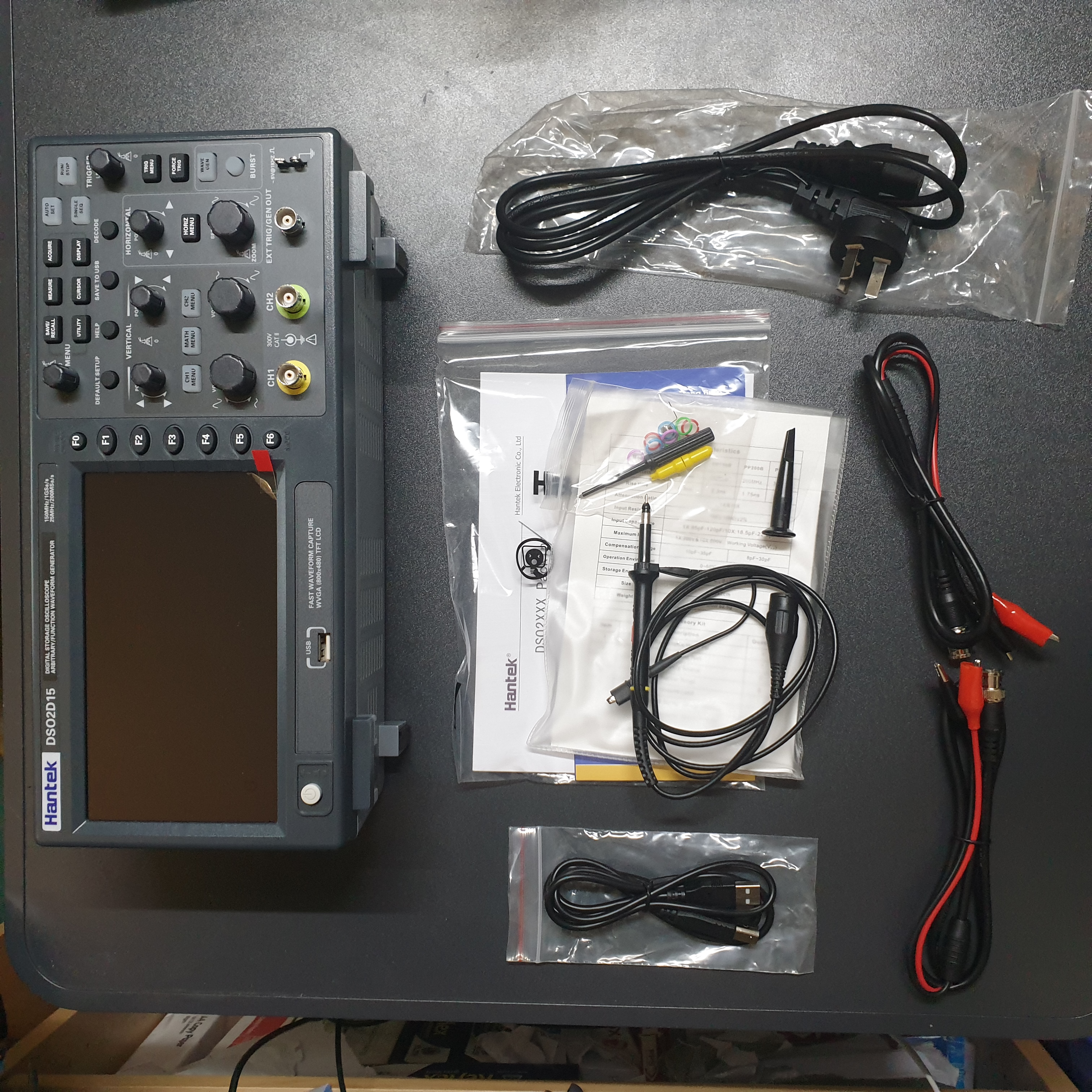
- Hantek DS02D15 Oscilloscope
- 2x Alligator probe
- 1x Needle probe
- 1x Spring-hook attachment for the needle probe
- 1x C13 IEC power cable
- 1x USB Type A to USB Type B cable
- Replacement parts?
- Manuals, Warranty, etc…

The panel layout seems straight forwards and user friendly :)
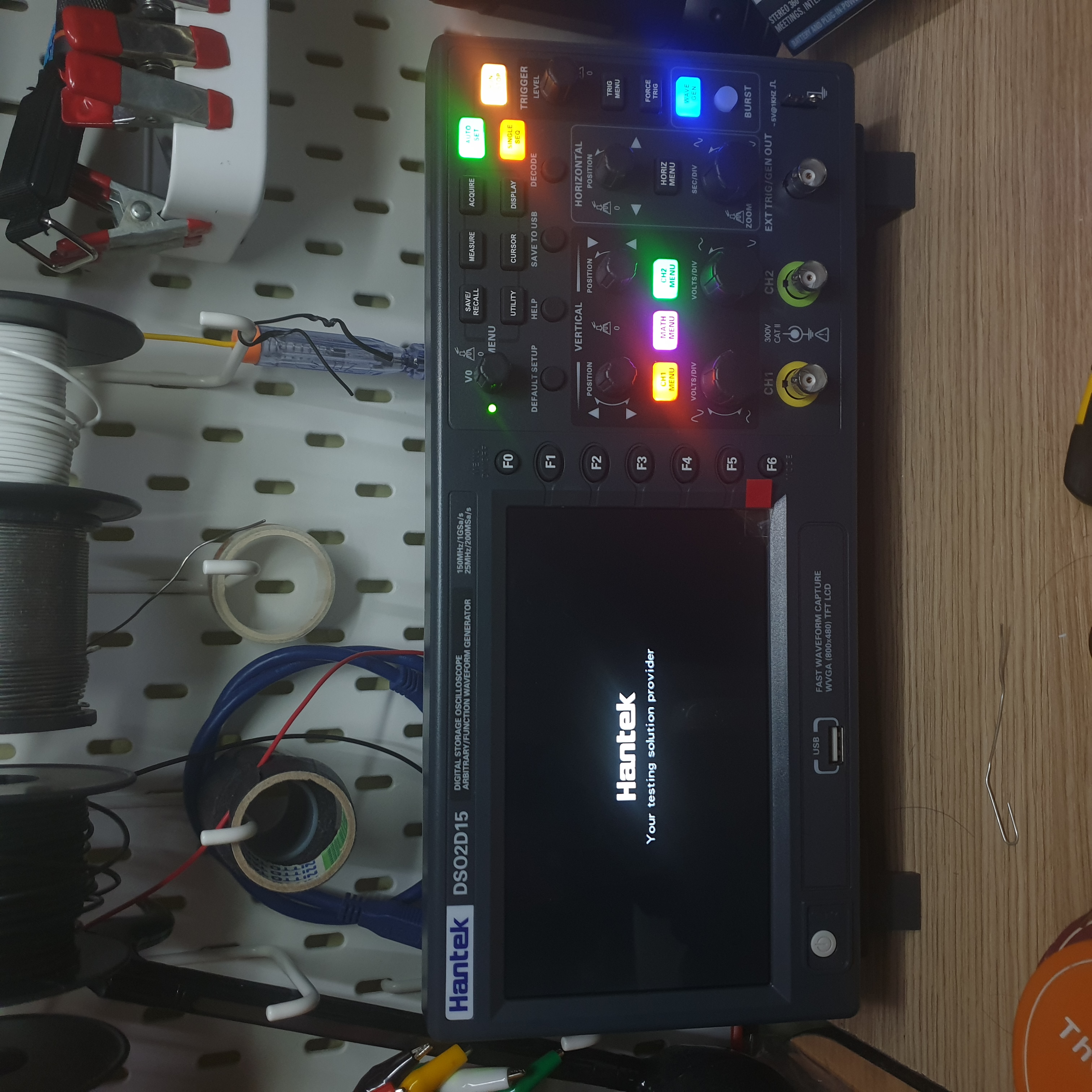
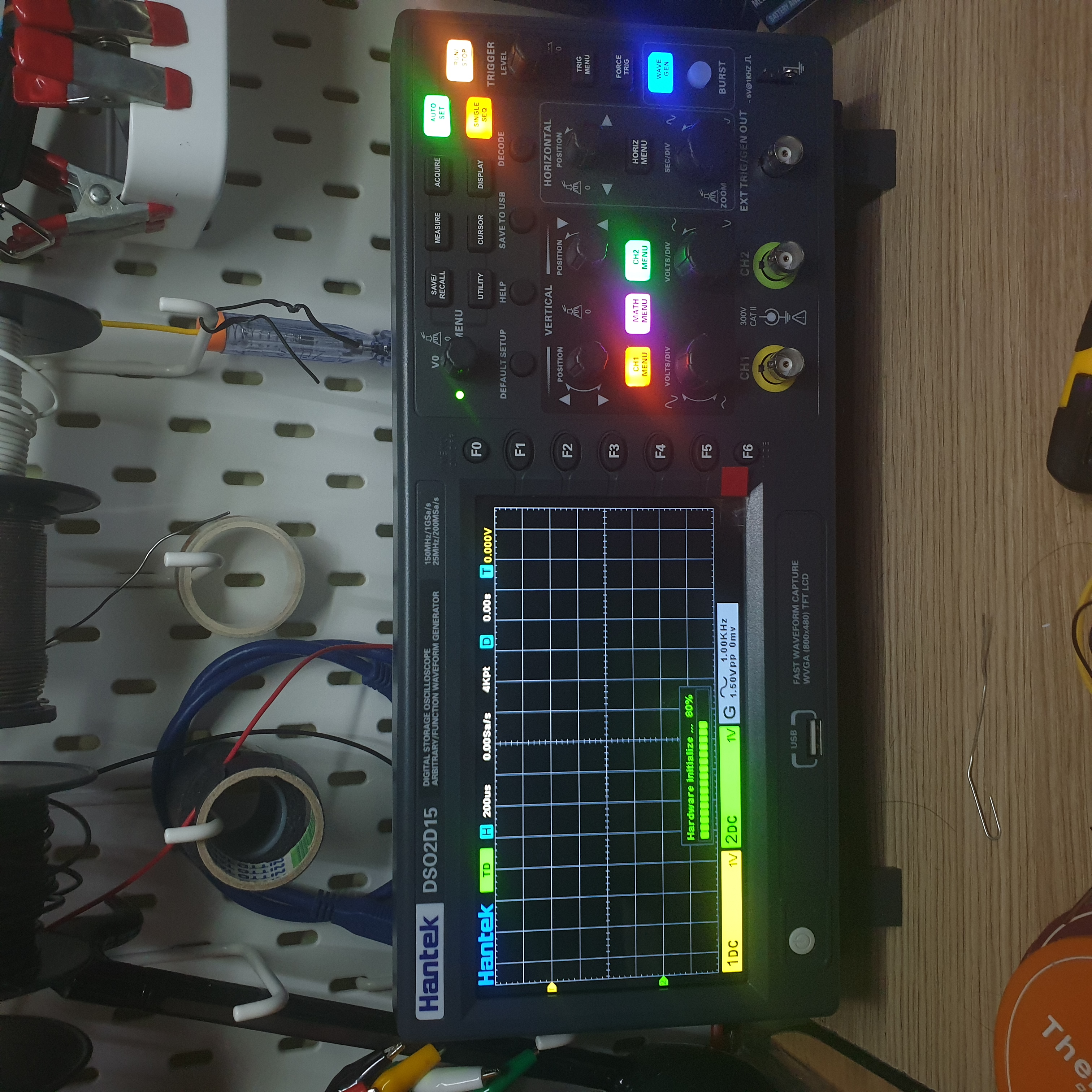
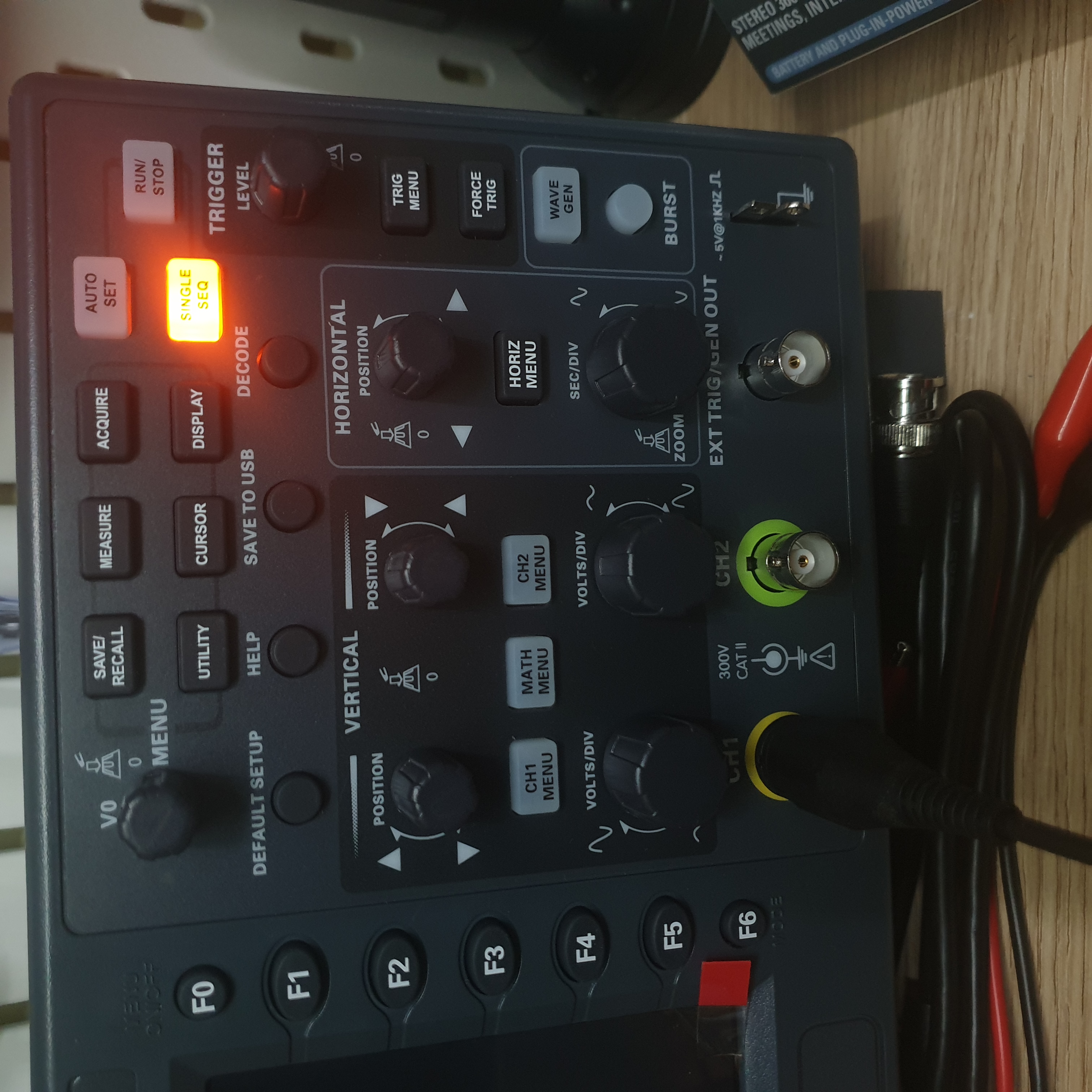
With how (AC-powered) oscilloscopes work, the negative probe is grounded to physical earth, so I’ll run into shorting issues if I attempt to probe an electrical component from the wrong pair of contact points.
From ELEC2134, what I remember is that I need to use two pairs of probes; and use the oscilloscope’s maths functions to actually find the ‘differential’ value. Unfortunately with my scope being a 2 channel scope - I effectively only have one usable channel of differential analysis…
Several manufacturers sell ‘differential probes’ - which would solve this issue; except that they are pretttttyyy expensive… Like anywhere from $250 - $1500
What’s In The Box
Okay let’s open it up!

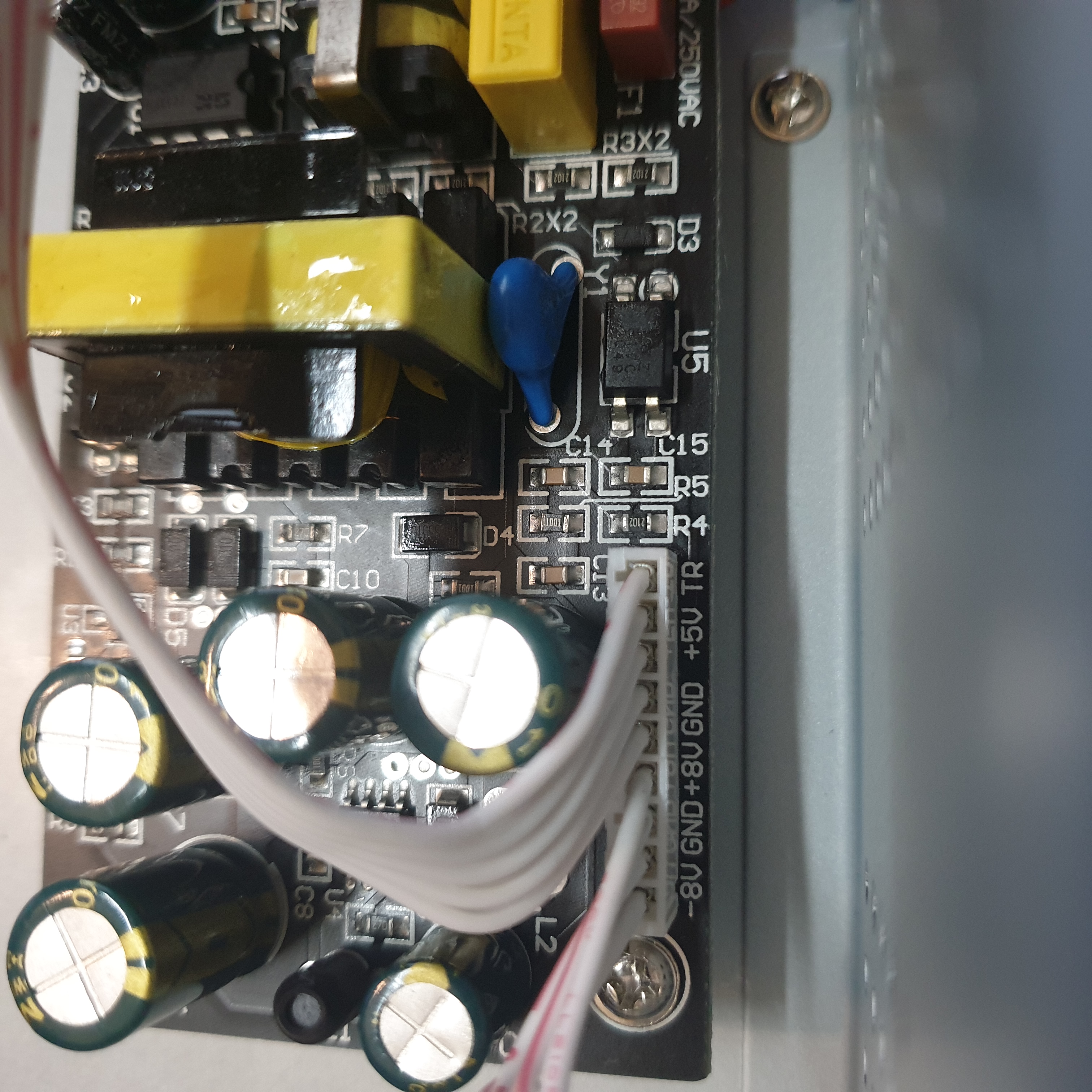
After removing the plastic casing, the first board we see is the power supply circuitry
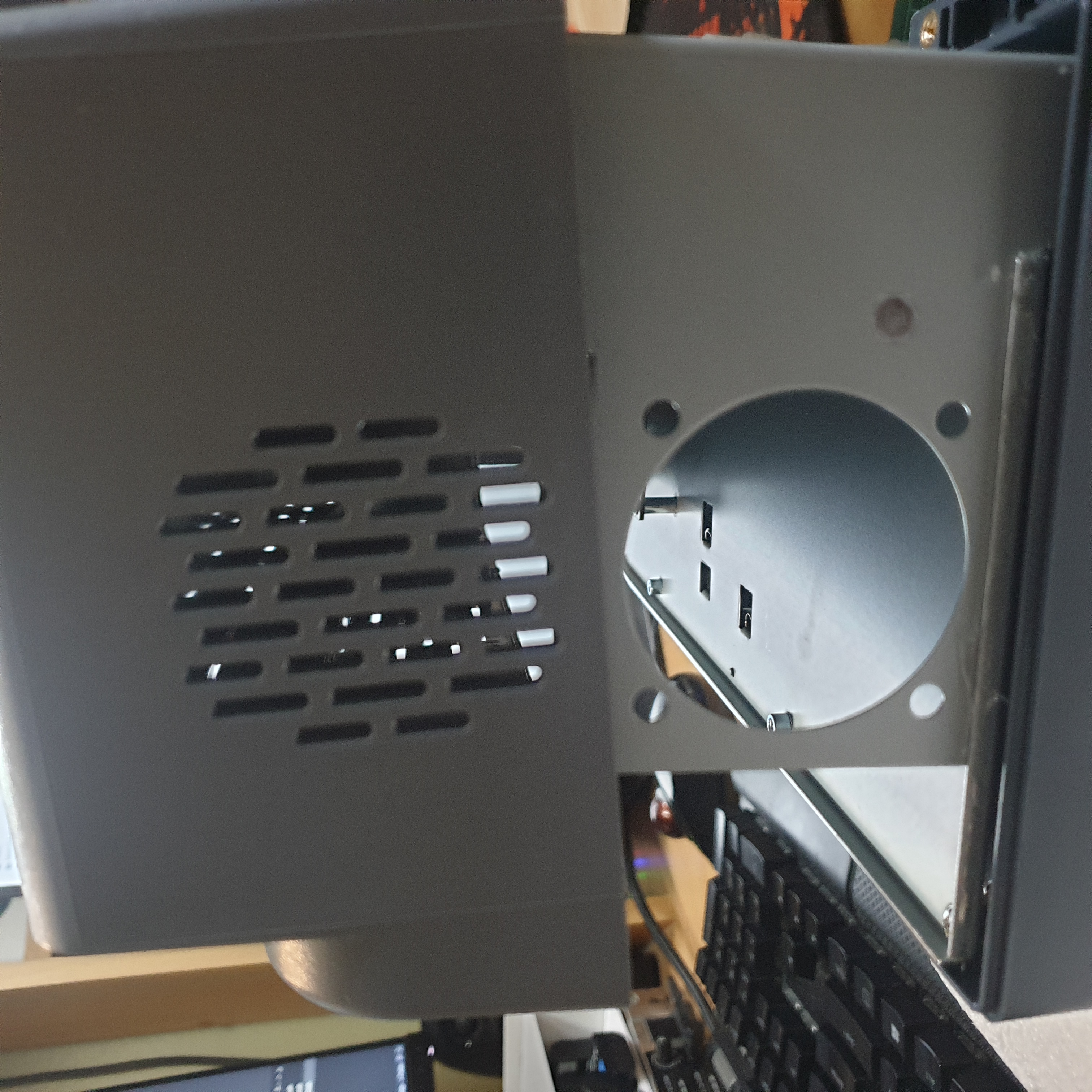
O hey, room for a fan in the future…?
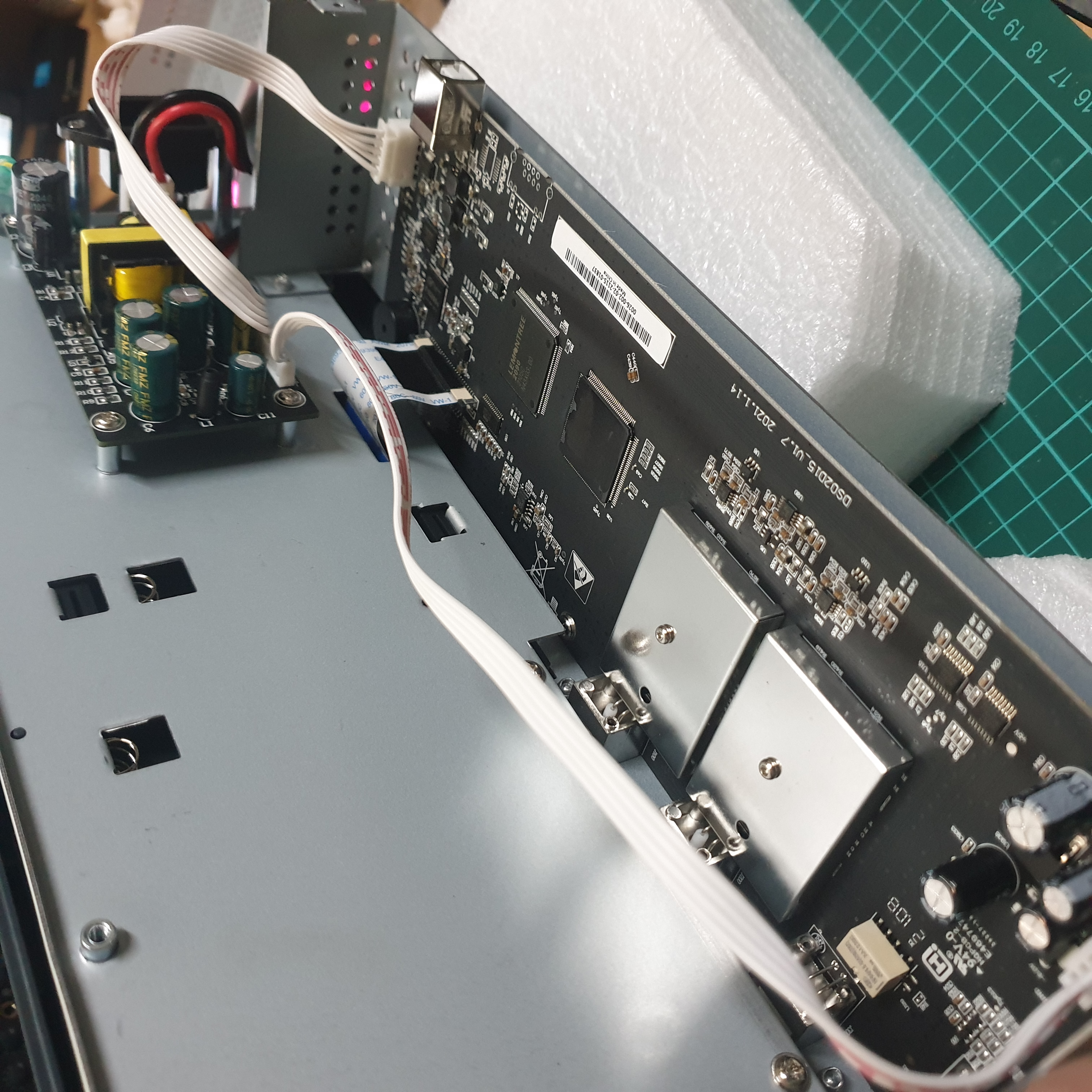
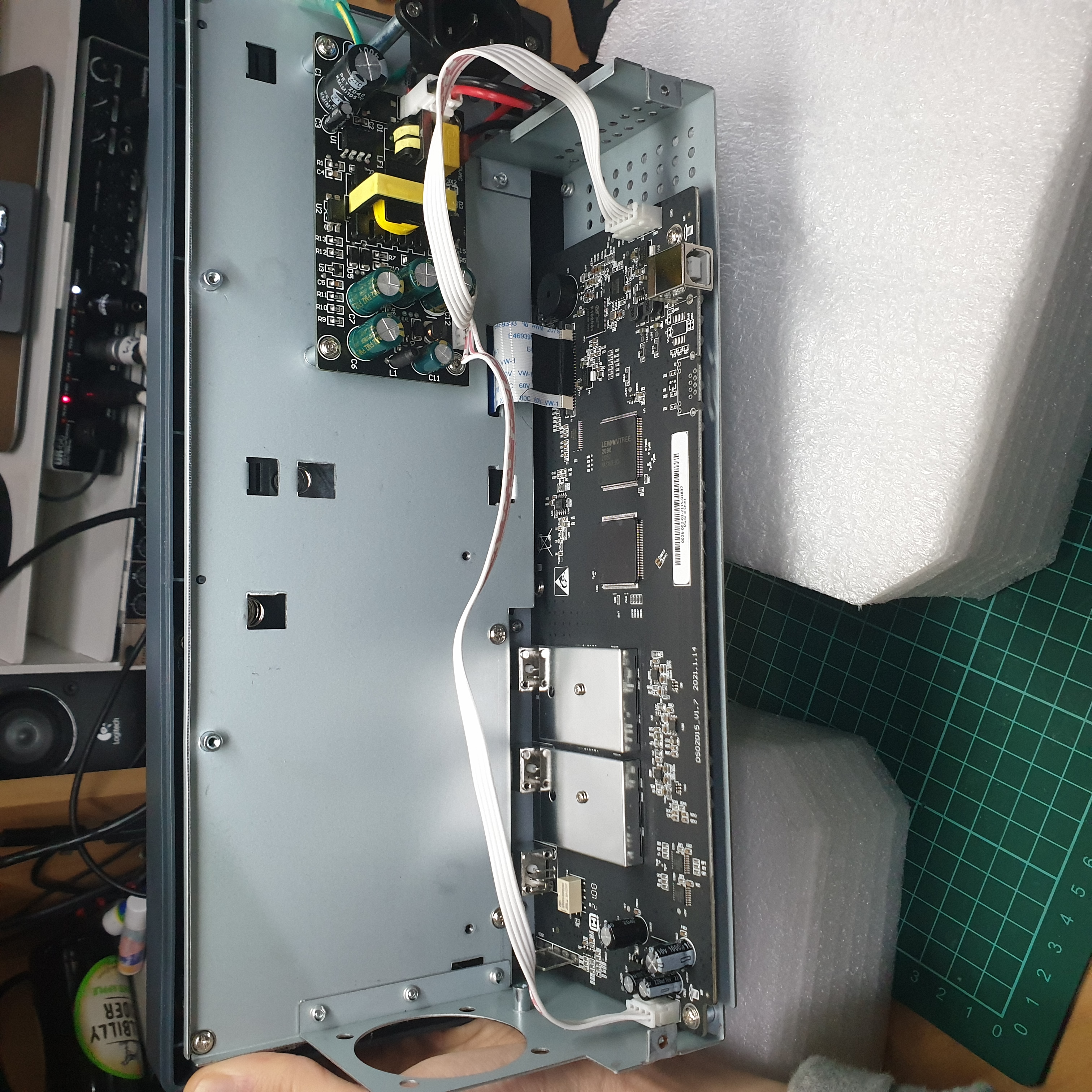
There’s quite a bit of empty space in the chassis
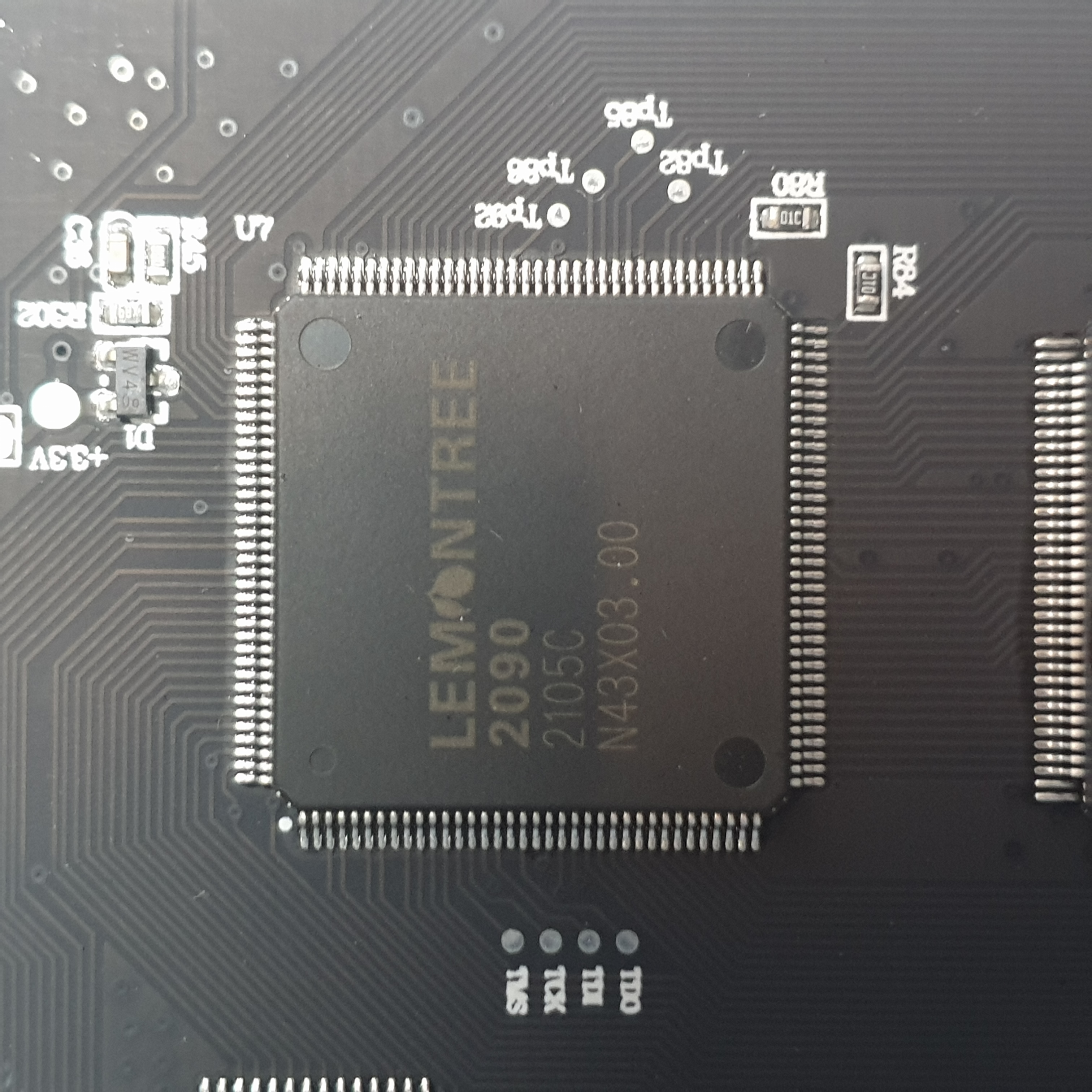
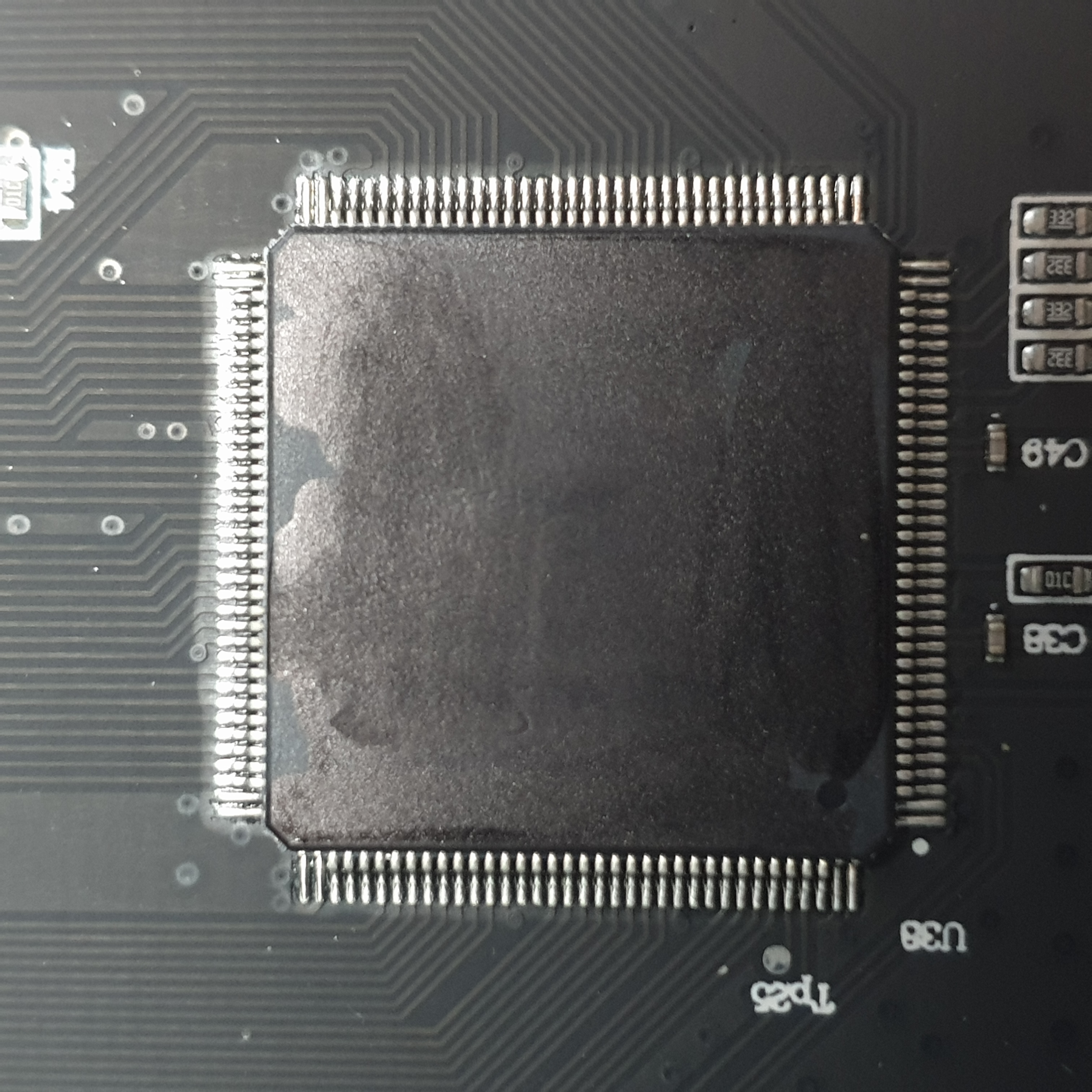
Here we have some sort of custom FPGA chip, and then some other blanked out chip….?
Software

The USB Type B connector on the back of the unit allows you to connect the oscilloscope to the computer - which lets you view the waveform and modify settings from the computer.
Although - I would be a bit skeptical with connecting my computer to a device that could potentially suffer short circuiting or funny voltages / frequencies / etcetera.
The oscilloscope uses the common Keysight IO protocol, yay for no proprietary drivers!
